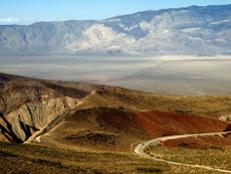Yosemite National Park, California


Tntemerson/iStock/Getty Images
The enormity of Yosemite is overwhelming, and as you crane your neck to take in mile-high waterfalls, slabs of granite and towering sequoias the words of famed naturalist John Muir may come to mind: "No temple made with hands can compare with Yosemite/in stern, immovable majesty, how softly these mountain rocks are adorned and how fine and reassuring the company they keep." The park's magnitude, however, makes it all too easy to lose sight of the minutiae of nature that adorn the landscape. In a region where nearly every turn presents a new and mammoth natural wonder, step back and absorb the often-overlooked grandeur of the park's 37 types of trees, 1,400 species of flowers and 350-plus types of animals.
Yosemite Valley is home to most of the park's largest attractions, including El Capitan, Upper Yosemite Waterfall, the sequoias, Glacier Point and Bridalveil Falls - not to mention most of the park's annual 4.1 million visitors. Wander onto some of the area's side trails though, and tranquility awaits. Don't be surprised if you catch glimpses of bighorn sheep, coyotes or even an American black bear. Nature's miracles don't end with the day - stargazing and moonlit walks ensure that Yosemite at night is just as glorious.

Geological History
Some 500 million years ago, the Sierra Nevada region that was destined to become Yosemite lay under a sea. The movement of tectonic plates forced the sea floor upward, and granite formed as the earth's molten rock cooled beneath layers of sediment. As uplifts continued to occur to the ground, water, and then glaciers, moved through the area carving and shaping the region into the geological wonder it is today.
Park Activities
The major sites of Yosemite are easily seen by car, free shuttle or guided tour. To lose the crowds and commune a bit better with all the nature, be sure to step off the beaten trail once in a while. The most recognized features of Yosemite are the 2,425-foot-high Yosemite Falls, 620-foot-high Bridalveil Falls and, at 3,593 feet, the largest granite monolith in the world, El Capitan. More opportunities to feel dwarfed by nature exist in the Mariposa Grove of Big Trees, where 700-year-old sequoias tower overhead. Not to mention the top of Glacier Point, where visitors can take in some of the park's most unforgettable views - Half Dome in the distance; Nevada, Vernal and Yosemite falls; and sweeping vistas of the valley floor.
Where to Stay
Yosemite is enormous, and lodging outside the park will only leave you with a heck of a commute. Though its setting isn't the most intimate (18 standard motel rooms, 46 cabins with private baths, 14 cabins with a central bath and 403 canvas tent cabins), Half Dome Village lies in the thick of the park and offers families a number of amenities, including a swimming pool, gift shop, amphitheater, bike rentals and an ice rink.
Side Trips
Maybe it's the "clang, clang, clang" of those trolleys, or that landmark Golden Gate Bridge. Regardless, there's just something about San Francisco that beckons. It's hard not to be entranced by the liberalism, the spirit, the arts and, heck, the out-of-this-world Chinese food. Whether you're buying hemp necklaces on Haight-Ashbury, shopping in chic boutiques or strolling Union Square, you very well may leave your heart in San Francisco.


























.jpg.rend.hgtvcom.231.174.suffix/1674758726773.jpeg)












